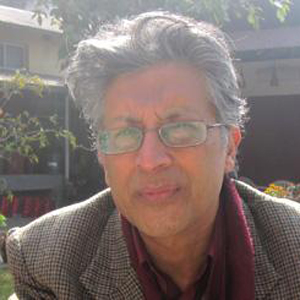Opinion
The judges have spoken
The future course of action depends on how Axiata reacts to the court order.
Narayan Manandhar
The Supreme Court finally released its written verdict two months after delivering its judgment on the capital gains tax controversy of telecommunications service provider Ncell on February 6. The case came under the consideration of the court after some persons representing civil society filed a public interest litigation case on January 18, 2019. Nepal’s apex court must be commended for its speed and efficiency in delivering the verdict. The ruling runs to 39 pages. To have common understanding and interpretation, it is replete with legal and technical words and phrases translated into English. On page 35, I detected an error where a Nepali line has been translated into a meaningless English form: ‘Disposal with retention of asset or deemed disposal’. The words ‘deemed disposal’ should have been ‘deemed liabilities’.
There are two interesting points in the court order that readers may not be aware of in the earlier oral court order. One, the Large Taxpayers’ Office is to determine the outstanding tax amount to be paid within three months from the date of receipt of the order. Two, Ncell shareholders cannot trade their shares, and the company cannot distribute any dividends until the tax obligation is satisfied. On the same day, three different writs related to the issues brought by three different applicants were also quashed.
Definitional issues
Axiata, which owns Ncell, has confirmed the court order and acknowledged that it is without prejudice to their remedial rights. Claiming in a roundabout fashion to be the largest taxpayer in Nepal with 16.3 million customers and being a provider of direct and indirect job benefits to 93,800 persons, Ncell reminded the government to be supportive of its commitment and use of investment as ‘a demonstration of the willingness and openness of Nepal to attract further foreign investment’.
The 39-page Supreme Court verdict indulges needlessly in definitional issues. There is little on conceptual clarity and elaborations. More than half of the document is devoted to arguments provided by the plaintiffs and the defendants. On page 22, it spelled out four issues to be resolved: Is the case within the jurisdiction of the court? What is the nature of the transaction raised in the case? Is the transaction subject to capital gains tax and, if so, who is responsible for paying it? Is it necessary for the court to issue an order as deemed by the petitioners?
Even though it is not written in specific terms related to Ncell, the verdict has regarded its multi-layered holding structure as a deliberate mechanism designed to ‘evade’ taxes. The interesting layering goes like this: TeliaSonera AB Sweden holds majority shares of TeliaSonera UTA Netherlands, which in turn holds Telia Sonera Asia Holding Norway, which in turn holds Telia Sonera Norway Nepal Holdings, which in turn holds Reynolds Holdings, and finally, Reynolds holds 80 percent of Ncell’s shares. At a time when ‘beneficial ownership’ determination has become a global agenda of the anti-corruption drive, the verdict contained needless elaboration on the mechanism to evade taxes, giving the impression of an academic paper. However, we must appreciate the order for not indulging in poetic, sentimental phrases. Primarily, the court has used provisions in the Income Tax Act 2002 as the basis for determining ownership disposition and imposition of capital gains tax.
A careful reading of the verdict document reveals two pitfalls that Ncell has fallen into. The first is not furnishing the necessary documents like the Due Diligence Audit Report, Share Purchase Agreement, Escrow Account, and Escrow Agreement to the Large Taxpayers’ Office, thereby keeping it in the dark while assessing capital gains tax. The second is making an advance deposit of capital gains tax amounting to Rs21.55 billion and fines totalling Rs2.03 billion which is tantamount to accepting Ncell’s obligation to pay capital taxes.
Herculean task
The current debate was triggered primarily by TeliaSonera’s refusal to pay its 10 percent share of the capital gains tax. In the absence of TeliaSonera, the court has asked Ncell and its new owner Axiata to pay the taxes, assuming Axiata has benefitted from ownership disposition. As TeliaSonera is no more in the picture, no order has been issued against it. The future course of action depends on how Axiata reacts to the court order. The court order is also silent about several earlier transactions related to Ncell ownership transfers. Axiata will probably bring this issue for review.
Will it be possible to implement the court order—that is collect taxes from Axiata within three months? When it takes more than 60 days to draft the court verdict, to collect taxes of that scale within 90 days definitely looks like a herculean task. Moreover, the tax assessed so far by the Large Taxpayers’ Office is only an estimate, and is subject to revision following the availability of the necessary documents from the parties. True to its name, the Large Taxpayers’ Office has a large problem on its hands. Now the ball is in the government’s court. Meanwhile, we can fairly expect Prime Minister Oli to dribble the ball for a while. Having just boasted about successfully completing the Investment Summit Nepal 2019, he will soon be wondering what to do with the ball.
Manandhar is a freelance management consultant.




 5.44°C Kathmandu
5.44°C Kathmandu












